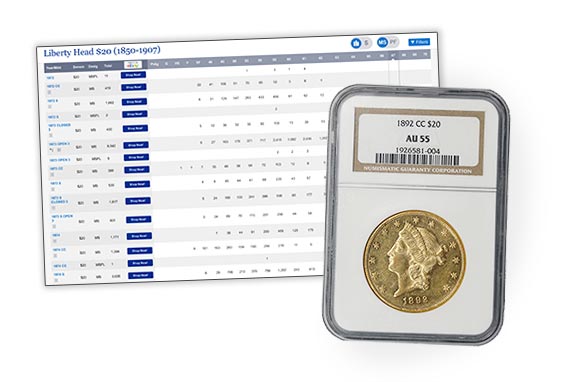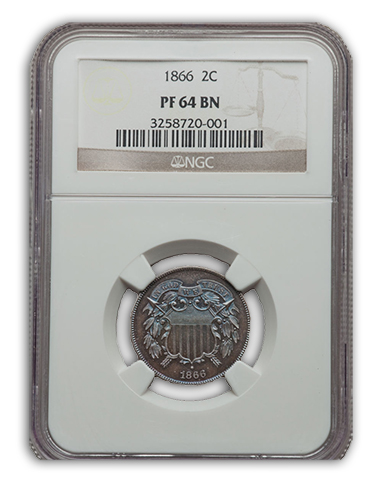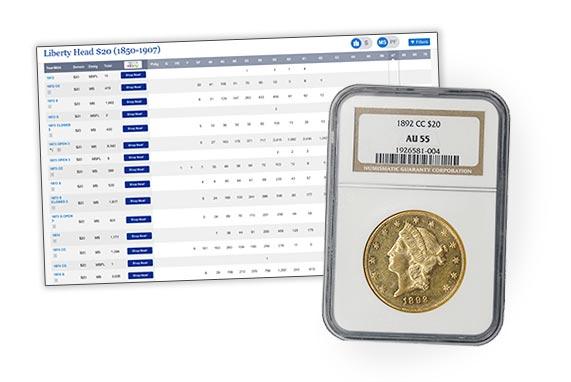Years ago, the known rare coins were a combination of guesswork and experience. Researchers had done much work on a few specialized series such as Half Cents, Large Cents and Capped Bust Half Dollars. The remainder of most numismatic series was largely unexplored for true rarity, especially as to condition rarity.
Many, if not all, price guides 30 years ago listed prices for coins in grades that did not exist. A great example of this was the many branch mint gold coins that are unknown in mint condition. The opposite was the case for many issues that we now know to be much more common than previously thought. Thirty years ago, a Gem common date Morgan silver dollar was much more valuable than it is today. The same can be said for many common date United States gold coins.
The basis for collecting rare coins has much to do with rarity and availability. When third-party grading started, everyone was excited to have the grading issue finally addressed. Third-party grading led to an explosion in the hobby, and has revolutionized numismatics.
One of the side benefits of third-party grading has been the creation of population reports. Grading companies keep track of every coin they grade, and publish this information for collectors and dealers. Over the past three decades, a large majority of rare coins have been certified. This has created one of the most important tools in numismatic history. Most collectors and dealers refer to this information whenever they make a purchase.
The population reports are vital information, but there are nuances that should be considered when using them.
Utilizing Population Reports

One of the most important things to consider when using population reports is that the information is not always accurate. The grading services make a huge effort to ensure the accuracy of population reports. Unfortunately, when many coins are removed from their holders for resubmission or other reasons, the inserts are not always returned. When this happens, grading services are unable to adjust the population information. They have even offered rewards for tags to be turned in, recognizing that the accuracy of the reports is vital to many collectors. Many dealers and collectors are just too lazy to send back the tags; others have more nefarious reasons.
Years ago, one or two coin dealers kept tags for important coins they had resubmitted on multiple occasions. The individuals did not return the tags because they wanted to be the only ones who knew the true rarity of certain coins. This was met with considerable peer pressure, and eventually the tags were returned. Regardless, it is quite evident that not ALL tag inserts have been returned to the grading services.
There are quite a few coins with certified populations that are higher than the actual reported mintage. The 1878 Proof gold dollar is a great example — the mintage for this very rare coin is only 20 examples, yet there have been 26 coins certified, according to the population reports. The bottom line is that the reports are important information, but should not be taken as 100% accurate in all cases.
Population reports are also an important indicator for new coin discoveries. Sometimes, an incredible coin will surface and be certified, and this new information is available for all to see.
A few years ago, an amazing 1870-CC Double Eagle was discovered and graded AU 58 by NGC. The coin was listed on the population report as the finest known, and this important information was available for specialists of the series. Incredibly, the coin was stolen while in transit after leaving another firm a short time later, and is still missing.
Population reports can also jump widely when a large hoard or group is discovered. In the last couple of years, two original rolls of 1909-S VDB cents were discovered and certified. The population of certified examples jumped considerably, and prices fell as well. Specialists of this series would find this information extremely important.
Impact on Registry Sets

Registry Set collecting has become extremely popular for nearly every series of United States coinage. Collectors compete to assemble the finest sets possible. Without population reports, collectors would be in the dark about the possibilities in their series. The population information is even important for those collecting low-ball (the lowest grade possible) sets. Sometimes a low-rated example will sell at auction for more than a Mint State example, if there are very few available for sets.
The population information is obviously an important factor when a new “finest known” is certified. The rank of someone’s set can be altered by a new discovery.
For many dealers and collectors, the population information is vital when trying to establish the price for a coin. Pricing a coin with a population of 200 is much easier than for one with a population of two. There will be much more auction information or accurate price guide listings. Low-population coins are always in demand and can sometimes bring staggering prices at auction.
In general, population information has become one of the most important tools available to collectors. The information is extremely helpful, but should be used with the educated knowledge that there are variables to be considered. Hopefully, this article gives you more information to use them successfully.

